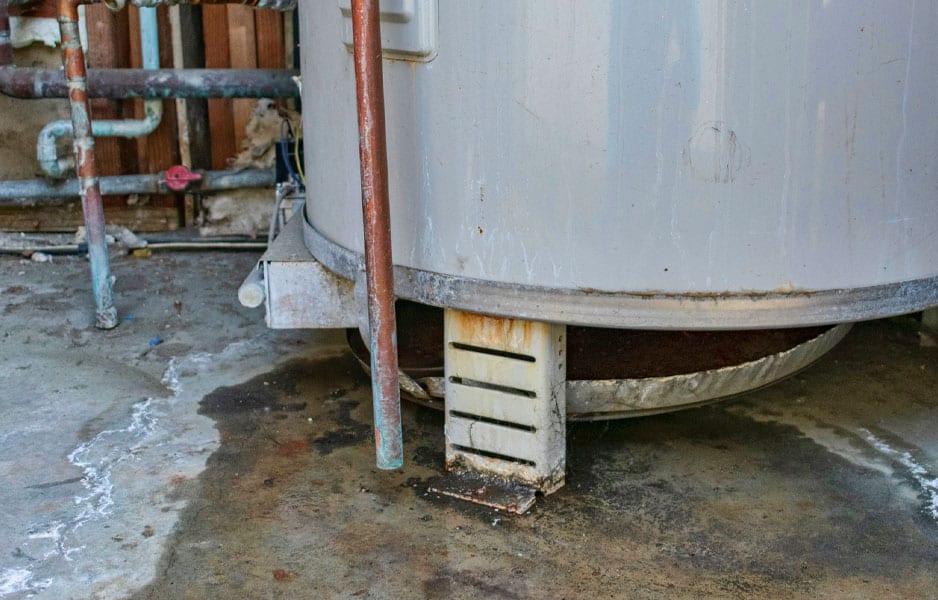A water heater drain pan is an important component to many water heater setups. Do you know what these are for and some of the key things to be aware of with regard to them? If not, we’ve got you covered. Here’s a quick rundown of today’s water heater drain pans.
Drain Pan Purpose
A drain pan for water heater systems is a pan, or small container, that many water heaters sit in. These pans are specifically made to catch water should your water heater leak or relieve itself of water pressure through its T&P Valve (Temperature and Pressure Valve). There are many types of leaks that water heaters can have, and their T&P valves can sometimes open and release some water in order to abate internal pressure issues. Enter the drain pan for water heater systems.
Common Setups
Water heater drain pans are typically shallow and are not meant to hold a vast volume of water. They are, however, meant to hold enough water to stave off the spread of water in the surrounding area should there be a small leak or a brief T&P valve release as described above. All drain pans are made of either metal or plastic materials.
Unfortunately, not all water heater installers equip water heaters with drain pans. In situations where the pans are installed, though, they can either be self-contained, or they can be piped. Piped water heater drain pans offer the best possible setups because they allow for water that builds up inside of them to then run off via an attached drain pipe. The choice as to whether or not this type of piping is added to a drain pan involves numerous factors including pricing, local building codes and ordinances, and physical allowances within the design of the structure that may or may not actually allow for such hot water drain piping to be added.
Signs of Trouble
If you have a water heater drain pan, you’re in much better shape than those without them. With that, though, it’s a good idea to check on the state of these pans about once a year or so. This can be done by a simple visual check of the pan. If you see any degradation of the pan, such as cracks, scaling, or holes, you should have the pan checked by a pro for possible repair or replacement. Also, it’s best to maintain these pans to be clean and clear of debris so that their water holding capacity is not further limited and that, if a drain is attached, it does not become clogged.
If a drain pipe is attached to your water heater drain pan, it may be attached via a connection that uses a threaded end that’s held in place by a nut. This nut can become loose with time or due to vibrations in the area, so it can also be a good idea to hand-check this nut for tightness on occasion. Some drains attach to their pans by way of a glue or copper fitting, however, and these connections can simply be checked with a quick visual lookover.
If you suspect an issue with your water heater drain pan or even would like to have a new drain pan installed where there was no pan in place before, we’ve got you covered. Here at The Original Plumber & Septics, water heater drain pans are just one of the vast array of plumbing components and systems that we work on every day. Proudly serving the greater Atlanta area seven days a week with the best plumbing service around, we’re always here when you need us. Give us a call today, and we’ll be on the way.




